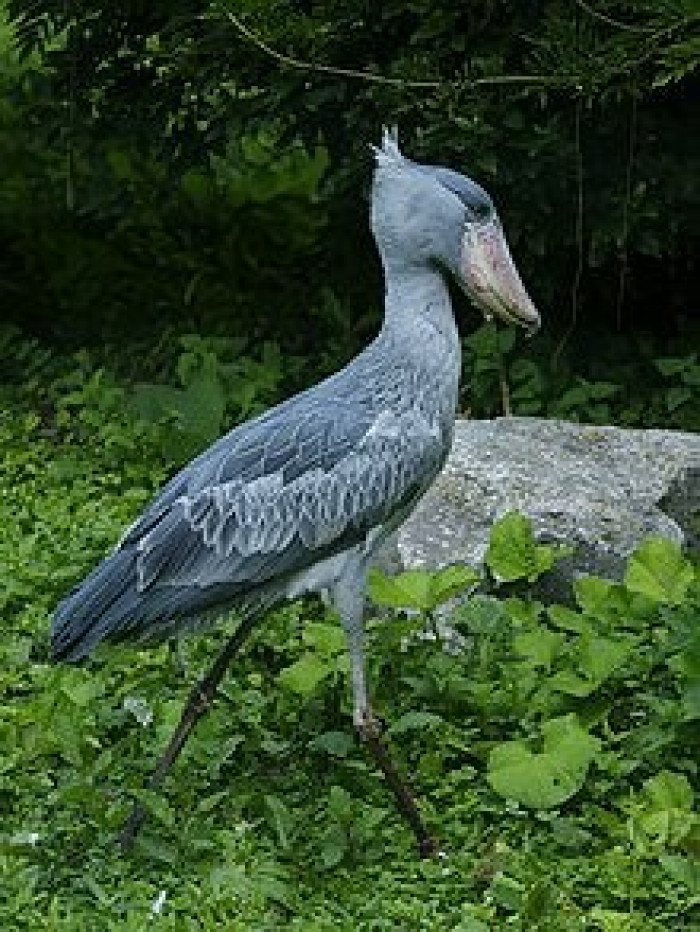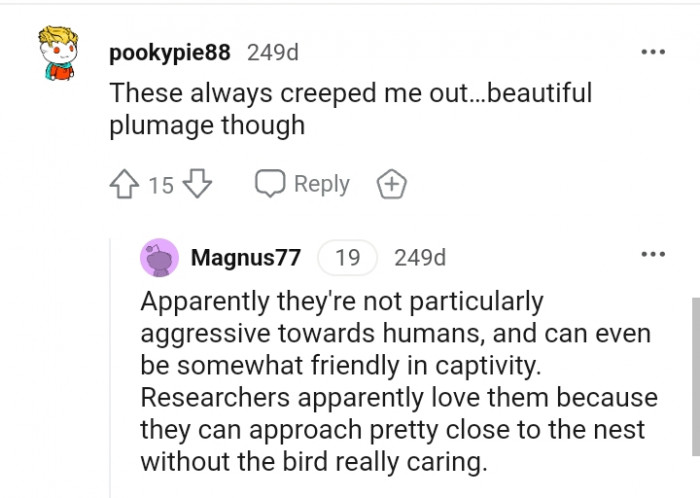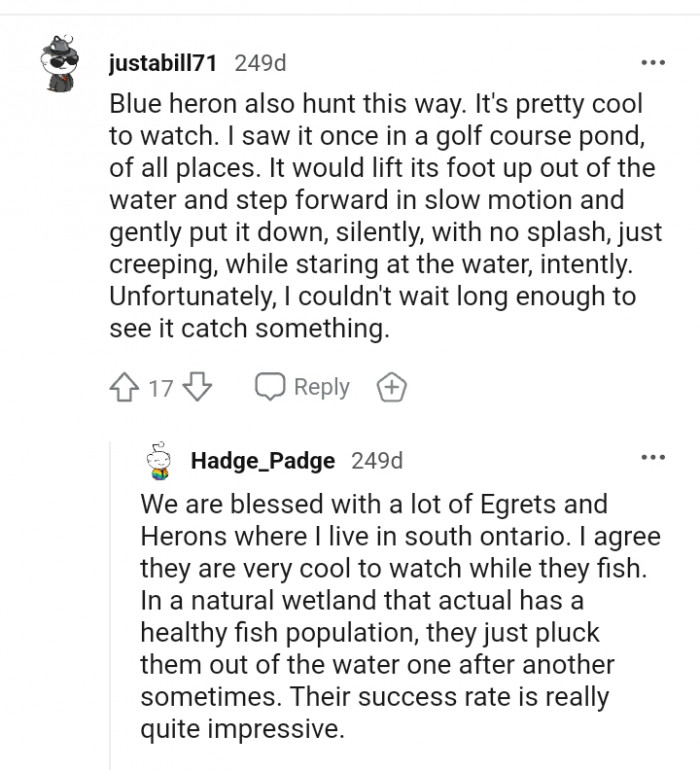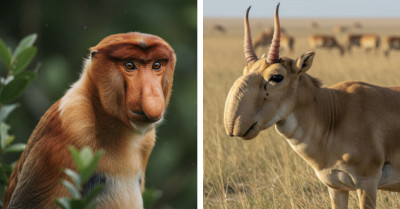Redditors Learn About Shoebill, A Bird That Stalks Their Prey Patiently While Striding Very Slowly And Is Frequently Motionless
A very large wading bird with long legs, the shoebill (Balaeniceps rex) is also known as the whalebill, whale-headed stork, or shoe-billed stork. Its large, shoe-shaped bill is where its name comes from.
Its general shape is fairly stork-like, and because of this, it was originally included with storks in the order Ciconiiformes. However, genetic data placed it in the Pelecaniformes order, alongside herons and pelicans.
Although it's possible that the shoebill was known to the Ancient Egyptians, classification didn't occur until the 19th century, when skins and subsequently live specimens were introduced to Europe. The shoebill has been referred to as "statue-like" due to its sluggish movements and propensity to remain stationary for extended periods of time.
Because they are so sensitive to human disturbance, they may leave their nests if people disturb them. However, when foraging, this wader can be relatively docile, provided there is thick foliage between it and people.
The shoebill prefers low-oxygen environments like swamps, marshes, and bogs where fish frequently come to the surface to breathe. The shoebill often stands and perches on floating vegetation, which is unusual for a bird of this size and gives it the appearance of a giant jacana, though the similarly sized and occasionally sympatric Goliath heron (Ardea goliath) is also known to do so.
Meet u/My_Bird_Buddy, a Redditor who has shared an interesting piece of information with the TodayILearned subreddit community

This is a Shoebill and they are known to prey on baby crocodiles, among other species

The juveniles are browner than the adults, which are mostly gray. They inhabit expansive marshes in tropical East Africa, from South Sudan to Zambia.
Due to their solitary nature, shoebills forage at least 20 meters (66 feet) apart, even in areas that are rather densely populated. Keep scrolling to see what Redditors had to chirp about this discovery.
Hitting their prey with the machine gun

The Psychology of Patience in Nature
Dr. Mark Lewis, a behavioral ecologist, discusses the shoebill's stalking behavior as a fascinating example of patience in the animal kingdom.
Research shows that patience is not only a survival strategy for animals but also a trait that can be cultivated in humans.
Studies indicate that practicing patience can enhance emotional regulation and decision-making skills, leading to improved personal relationships.
The Art of Patience in Hunting
The shoebill's hunting strategy provides a fascinating insight into the psychology of patience and focus. Behavioral ecologists have studied the shoebill's ability to remain motionless for extended periods, demonstrating a remarkable adaptation to its environment. Research published in the Journal of Avian Biology suggests that this patience is not only a hunting tactic but also a reflection of its evolutionary success.
From a psychological perspective, this behavior can be linked to the concept of delayed gratification. Studies have shown that individuals who can exercise patience and defer immediate rewards often achieve greater long-term success. This principle can be applied to human behavior, highlighting the importance of cultivating patience in various aspects of life.
This Redditor believes shoebills are so cool

Shoebills actually sound like machine guns

According to this Redditor, they are consummate hunters

Moreover, psychological research highlights the benefits of mindfulness, which shares parallels with the shoebill's slow, deliberate movements.
Mindfulness practices have been shown to reduce anxiety and increase overall well-being, as individuals learn to engage with the present moment.
This connection suggests that observing such bird behaviors can inspire humans to adopt similar practices in their own lives.
Interestingly, the shoebill's hunting method can also serve as a metaphor for mindfulness and presence. Psychological research indicates that being fully present in the moment can enhance focus and decision-making. According to studies in the Journal of Positive Psychology, mindfulness practices have been shown to improve cognitive functioning and emotional regulation.
By observing the shoebill's stillness, we can learn valuable lessons about the importance of slowing down and being present in our own lives. This can encourage mindfulness practices that foster a deeper connection to our surroundings and enhance our overall well-being.
That looks like a person in a bird costume

This species patiently and slowly hunts its prey while hiding. The shoebill moves very slowly and is frequently immobile when hunting.
This species does not have a reputation for using tactile hunting techniques, unlike some other large waders. Instead, it hunts entirely by vision.
When prey is spotted, it strikes quickly and violently. However, handling time after the strike can last longer than 10 minutes, depending on the size of the prey.
About 60% of strikes result in a kill. During the strike, water and vegetation are frequently snatched up and spilled out from the edges of the mandibles.
They can approach pretty close to the nest

According to this Redditor, it looked so unrealistic

The Significance of Observational Learning
Observational learning plays a crucial role in how individuals adapt behaviors based on their environment.
Psychologists note that by observing the shoebill's patience, humans can reflect on their own responses to challenges.
Studies in behavioral psychology show that learning from nature can lead to improved coping mechanisms in stressful situations.
The Importance of Adaptation
The shoebill's unique hunting style is a testament to the importance of adaptation in the natural world. Ecological psychologists emphasize that adaptability is crucial for survival, not only in animals but also in humans. Research in evolutionary psychology suggests that our ability to adapt to changing environments has been a significant factor in our success as a species.
Understanding the shoebill's adaptability can inspire individuals to embrace change and develop resilience in their own lives. By fostering a mindset that values flexibility and innovation, we can better navigate life's challenges.
I have mastered the art of moving so incredibly well

They look like real-life muppets

It is pretty cool to watch

Additionally, researchers emphasize the importance of connecting with nature for mental health benefits.
Studies reveal that exposure to wildlife can enhance mood and promote feelings of well-being.
These findings suggest that incorporating nature observation into daily routines can provide individuals with essential psychological benefits.
To enhance our ability to adapt, individuals can benefit from practical strategies such as goal-setting and reflection. Research indicates that setting clear, achievable goals can help maintain focus during challenging times. According to studies published in the American Journal of Psychology, reflecting on past experiences can also provide valuable insights for future adaptation.
By applying these principles in our lives, we can cultivate a sense of agency and resilience, much like the shoebill does in its natural habitat.
She's a clever girl

For this Redditor, shoebills are creepy-looking

Why do these exist? Are they dinosaurs, or not?

Practical Applications of Bird Behavior
To cultivate patience, individuals can engage in activities that require slow, deliberate movements, such as gardening or meditation.
Creating opportunities for nature observation, like birdwatching, can also encourage mindfulness and enhance emotional regulation.
These practices can serve as accessible techniques for improving mental health and fostering a deeper connection with the natural world.
Engaging with Nature for Well-Being
The shoebill's hunting practices remind us of the profound connection between nature and mental well-being. Research in environmental psychology indicates that engaging with nature can significantly enhance mental health. According to studies published in the Journal of Environmental Psychology, spending time in natural settings can reduce stress and improve mood.
To promote this connection, communities can organize nature-based activities that encourage interaction with local wildlife. By fostering these connections, we can cultivate a deeper appreciation for the natural world and its impact on our well-being.
This Redditor is asking their own greetings

Hippopotamus activity may unintentionally help the shoebill because periodically, submerged hippos force fish to the surface. The shoebill can hunt large prey thanks to its razor-edged beak, enormous bill, and broad gape, frequently going after prey that is larger than what other large wading birds can capture.
Leave your thoughts about this bird in the comments below.
Psychological Analysis
This situation highlights the importance of patience and presence in both nature and human life. The shoebill's behavior serves as a reminder that embracing stillness can lead to greater focus and clarity. By incorporating mindfulness practices inspired by nature, we can enhance our adaptability and overall well-being.
Analysis generated by AI
Analysis & Alternative Approaches
In summary, the shoebill's unique hunting behavior offers valuable insights into patience, adaptation, and our connection to nature. By reflecting on these behaviors, we can enhance our own resilience and well-being. Engaging with the natural world not only promotes mental health but also deepens our understanding of ecological dynamics.
Analysis & Alternative Approaches
The shoebill's behavior offers valuable insights into patience and mindfulness, emphasizing the psychological benefits of connecting with nature.
Research supports the idea that observing wildlife can enhance emotional well-being and foster resilience.
By learning from these behaviors, individuals can cultivate patience and mindfulness in their own lives, leading to greater overall satisfaction.



